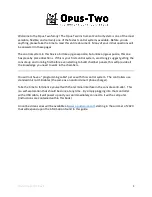
GE Power Management
PQM Power Quality Meter
A-9
APPENDIX A
A.1 PQM APPLICATION NOTES
A
A.1.4 TRIGGERED TRACE MEMORY RESOLUTION
APPLICATION NOTE PQMAN04: TRIGGERED TRACE MEMORY RESOLUTION
The Triggered Trace Memory can be used to detect and record system disturbances. The PQM uses a dedi-
cated continuous sampling rate of 16 samples per cycle to record fluctuations in voltage or current as per user
defined levels. The PQM calculates the true RMS value of one consecutive cycle, or 16 samples, and com-
pares this value with the user-defined trigger levels to determine if it will record all sampled waveforms. The
sampled waveforms include Ia, Ib, Ic, In, Va, Vb and Vc.
The PQM uses the following method to calculate the true RMS value of all sampled waveforms
where:
n
= the number of samples
V
= the sampled waveform
To find the minimum disturbance that the PQM can detect, we first solve for the magnitude of any one sample.
Deriving from the RMS calculation above, we have:
where:
n
= the number of samples
V
= the sampled waveform
k
= the sample to be extracted
The PQM Triggered Trace Memory has a minimum step value of 1% on the user defined level. Therefore, we
find the minimum magnitude of any sample that can be detected. Using the individual sample equation above:
where:
n
= the number of samples
k
= the sample number to be extracted
V
k
2
= the calculated value of the extracted sample that deflects the overall value of the RMS calcula-
tion by 1%
Knowing this, we can conclude that any individual sample that is equal to
V
k2
in the array of the 16 samples
evaluated by the PQM is the minimum disturbance that can be detected by the Triggered Trace Memory. The
PQM uses the fundamental RMS value based on the VT Secondary setpoint as the reference for the user-
defined Trace Memory trigger levels.
The minimum duration of a disturbance is determined by the sample rate. At 16 samples per cycle, the time
between samples is based upon the system frequency and is determined as follows:
where:
t
s
= the time between samples
f
= the system frequency as determined by the PQM metering functions
The PQM can determine frequencies from 20 to 80 Hz. Therefore, the minimum duration of a detectable distur-
bance is 0.783 ms at 80 Hz. The minimum duration of a detectable disturbance is 3.125 ms at 20 Hz.
TrueRMS
1
n
---
V
n
2
1
n
→
∑
=
V
k
n
TrueRMS
2
⋅
V
k 1
–
2
1
k 1
–
→
∑
V
k
1
+
2
1
k 1
+
→
∑
+
–
=
V
k2
n
0.99 TrueRMS
⋅
(
)
2
⋅
V
k 1
–
2
1
k 1
–
→
∑
V
k
1
+
2
1
k 1
+
→
∑
+
–
=
t
s
1
f
⁄
16
---------
=
Summary of Contents for Power Quality Meter Series
Page 2: ......
Page 4: ......
Page 10: ...vi PQM Power Quality Meter GE Power Management TABLE OF CONTENTS ...
Page 46: ...2 22 PQM Power Quality Meter GE Power Management 2 2 ELECTRICAL 2 INSTALLATION 2 ...
Page 56: ...3 10 PQM Power Quality Meter GE Power Management 3 4 DEFAULT MESSAGES 3 OPERATION 3 ...
Page 166: ...6 20 PQM Power Quality Meter GE Power Management 6 6 POWER ANALYSIS 6 SOFTWARE 6 ...
Page 274: ...B 4 PQM Power Quality Meter GE Power Management B 1 TABLES AND FIGURES APPENDIXB B ...
Page 276: ...C 2 PQM Power Quality Meter GE Power Management C 1 PQM WARRANTY APPENDIXC C ...
Page 281: ...GE Power Management PQM Power Quality Meter NOTES ...
















































